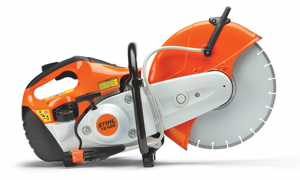A cut-off saw, or cut-off machine, is an essential piece of equipment for many. It can be used to cut rebar, to cut stock for welding, or even as part of your quality control program. Making ideal cuts can seem like an art form, however, and requires both skill and proper technique. Here are a few tips to help you produce ideal cuts more often.
- Proper preparation
Before you start cutting, you’ll need to properly assess your materials. Doing so will help you determine proper operator functions and if an abrasive wheel is even the right equipment for the job. Start by asking if the stock is hollow or solid. What type of finish does the cut end require? Have you cut this particular size and shape of this material before? The answers to these questions help you make the correct choices in how the stock is clamped, how the controls of the wheel are programmed and how to perform the manual downfeed.
- The abrasive wheel
Not all abrasive wheels are created equal and finding the right wheel for the job depends on the material you’re cutting. Most commonly, you’ll find abrasive wheels of aluminum oxide, used for mild steel, silicon carbide, used for glass, ceramics and tungsten, and zirconia for alloy steels. Abrasive materials also vary in grain sizes, ranging from the coarsest, 8, to superfine, 600. The coarser the grain, the faster the cut but the rougher the finish. Wheels are also graded in hardness. An ‘A’ rating is the softest and a ‘Z’ is the hardest. Generally speaking, you’ll use hard wheels to cut mild steel and soft wheels for hard alloys.
- Coolant
Even with the proper settings and abrasive wheel in place, there are other variables that affect the quality of your cuts. If you need a smooth, polished finish on the cut ends, you’ll want to employ a wet saw that supplies a steady flow of coolant as you’re cutting. The coolant has multiple jobs in this scenario. First, it lubricates the abrasion process. Second, the coolant does just what its name suggests and acts as a heat transfer agent. Finally, it flushes out loose particles in the cut.
- Power downfeed
When using a manual downfeed, both quality and the risk of scorching varies greatly due to the presence of human error and inconsistency. A better alternative exists in the form of a power downfeed. Using a power downfeed allows you to automate this process so that the rate is consistent from cut to cut and operator to operator. You’ll only need to adjust downfeed rate for each new material. The general rule of thumb being the harder the material, the slower the rate.
Arguably, the most popular and the standard of cut-off machines is the Stihl TS 420 Cutquik. To learn more about this and similar tools, give us a call at Maxwell Supply in Tulsa or stop by and see us.
